Iloilo launches food crawl guides to boost culinary tourism | ABS-CBN
ADVERTISEMENT

Welcome, Kapamilya! We use cookies to improve your browsing experience. Continuing to use this site means you agree to our use of cookies. Tell me more!
Iloilo launches food crawl guides to boost culinary tourism
Jeeves De Veyra
Published Nov 21, 2024 05:36 PM PHT
|
Updated Nov 22, 2024 10:34 AM PHT
 Iloilo has come out with two food crawl maps -- The Culinary Heritage Tour and the Street Food Tour. Jeeves de Veyra
Iloilo has come out with two food crawl maps -- The Culinary Heritage Tour and the Street Food Tour. Jeeves de Veyra
 Iloilo has come out with two food crawl maps -- The Culinary Heritage Tour and the Street Food Tour. Jeeves de Veyra
Iloilo has come out with two food crawl maps -- The Culinary Heritage Tour and the Street Food Tour. Jeeves de Veyra ILOILO -- Iloilo City, which has been named a UNESCO Creative City for Gastronomy, has made it a lot easier for tourists to enjoy its food and culture through new food crawl guides.
ILOILO -- Iloilo City, which has been named a UNESCO Creative City for Gastronomy, has made it a lot easier for tourists to enjoy its food and culture through new food crawl guides.
These food crawl maps were among the outputs from a third party-research initiative funded by the Department of Trade and Industry’s (DTI) Lungsod Lunsad grant where cities present innovations to foster trade and economy.
These food crawl maps were among the outputs from a third party-research initiative funded by the Department of Trade and Industry’s (DTI) Lungsod Lunsad grant where cities present innovations to foster trade and economy.
As a UNESCO Creative City, a city becomes a part of the network that has arts that support the local economy. There are three creative cities in the Philippines — Baguio for folk arts and handicrafts, Cebu for design, and Iloilo for gastronomy.
As a UNESCO Creative City, a city becomes a part of the network that has arts that support the local economy. There are three creative cities in the Philippines — Baguio for folk arts and handicrafts, Cebu for design, and Iloilo for gastronomy.
Iloilo even has a dedicated group that’s dedicated to overseeing its gastronomy initiatives under the city's MICE (Meetings, Incentives, Conventions, Events) office. Food tourism is a big draw for groups to come to the city and is a nice break during the evenings and the breaks between activities.
Iloilo even has a dedicated group that’s dedicated to overseeing its gastronomy initiatives under the city's MICE (Meetings, Incentives, Conventions, Events) office. Food tourism is a big draw for groups to come to the city and is a nice break during the evenings and the breaks between activities.
ADVERTISEMENT
“In terms of the arts, gastronomy might be the biggest because it affects farmers, markets, public spaces, restaurants, hospitality, airports, travel hotels, the whole tourism block. And of course, our creators, who have more opportunities now for cooks, whether you're fine dining chef or just a home cook or an online seller of food,” said Leny Ledesma, marketing lead of the Iloilo Gastronomy Team.
“In terms of the arts, gastronomy might be the biggest because it affects farmers, markets, public spaces, restaurants, hospitality, airports, travel hotels, the whole tourism block. And of course, our creators, who have more opportunities now for cooks, whether you're fine dining chef or just a home cook or an online seller of food,” said Leny Ledesma, marketing lead of the Iloilo Gastronomy Team.
In the recent “Pagtililipon” gastronomy conference, the output from the research was presented alongside a food show and exhibition booths. It was an occasion to revisit the Iloilo Gastronomy Map, present draft roadmap outputs, and foster interaction among city officials and stakeholders including restaurant owners, food producers, policymakers, tourism officials, and community members.
In the recent “Pagtililipon” gastronomy conference, the output from the research was presented alongside a food show and exhibition booths. It was an occasion to revisit the Iloilo Gastronomy Map, present draft roadmap outputs, and foster interaction among city officials and stakeholders including restaurant owners, food producers, policymakers, tourism officials, and community members.
One of the initiatives presented as a result of the information gathered were the two food crawl maps -- The Culinary Heritage Tour and the Street Food Tour.
One of the initiatives presented as a result of the information gathered were the two food crawl maps -- The Culinary Heritage Tour and the Street Food Tour.
For this trip, we were given a preview of the Culinary Heritage Tour featuring restaurants and cafes owned by third-generation owners, some even in heritage houses and sites.
For this trip, we were given a preview of the Culinary Heritage Tour featuring restaurants and cafes owned by third-generation owners, some even in heritage houses and sites.
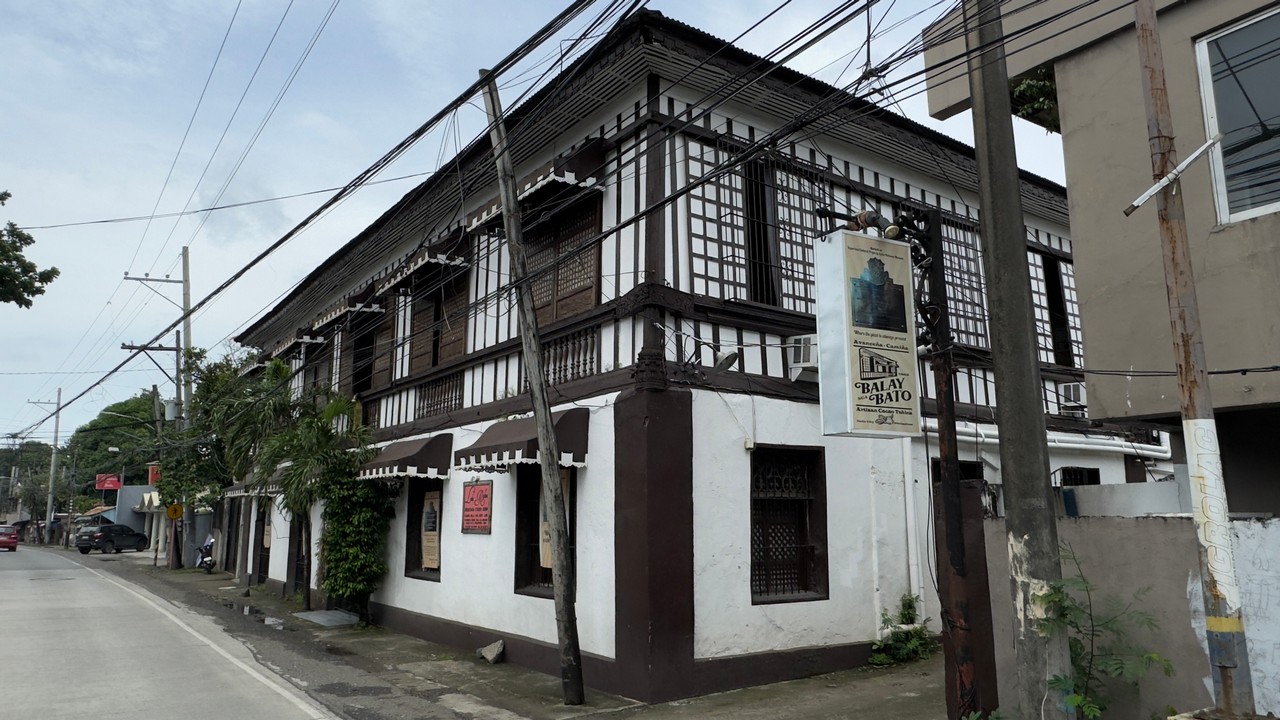 Camina Balay na Bato. Jeeves de Veyra
Camina Balay na Bato. Jeeves de Veyra
 Camina Balay na Bato. Jeeves de Veyra
Camina Balay na Bato. Jeeves de Veyra Camiña Balay na Bato is a must-visit when in iloilo. Designed by the first parish priest of Molo, Fr. Anselmo Avanceña, this almost 160-year old house was passed on to the care of the Camiña family. Guests are ushered to the second floor which is a museum in itself.
Camiña Balay na Bato is a must-visit when in iloilo. Designed by the first parish priest of Molo, Fr. Anselmo Avanceña, this almost 160-year old house was passed on to the care of the Camiña family. Guests are ushered to the second floor which is a museum in itself.
ADVERTISEMENT
 Molo and tsokolate at Camina Balay na Bato. Jeeves de Veyra
Molo and tsokolate at Camina Balay na Bato. Jeeves de Veyra
 Molo and tsokolate at Camina Balay na Bato. Jeeves de Veyra
Molo and tsokolate at Camina Balay na Bato. Jeeves de Veyra I’d say this is the best place to have Iloilo’s iconic pancit Molo with Caminha’s rich thick creamy broth and the meaty dumpling. Have this with tsokolate-eh made with tablea from the Camiña cacao farm in nearby Guimaras.
I’d say this is the best place to have Iloilo’s iconic pancit Molo with Caminha’s rich thick creamy broth and the meaty dumpling. Have this with tsokolate-eh made with tablea from the Camiña cacao farm in nearby Guimaras.
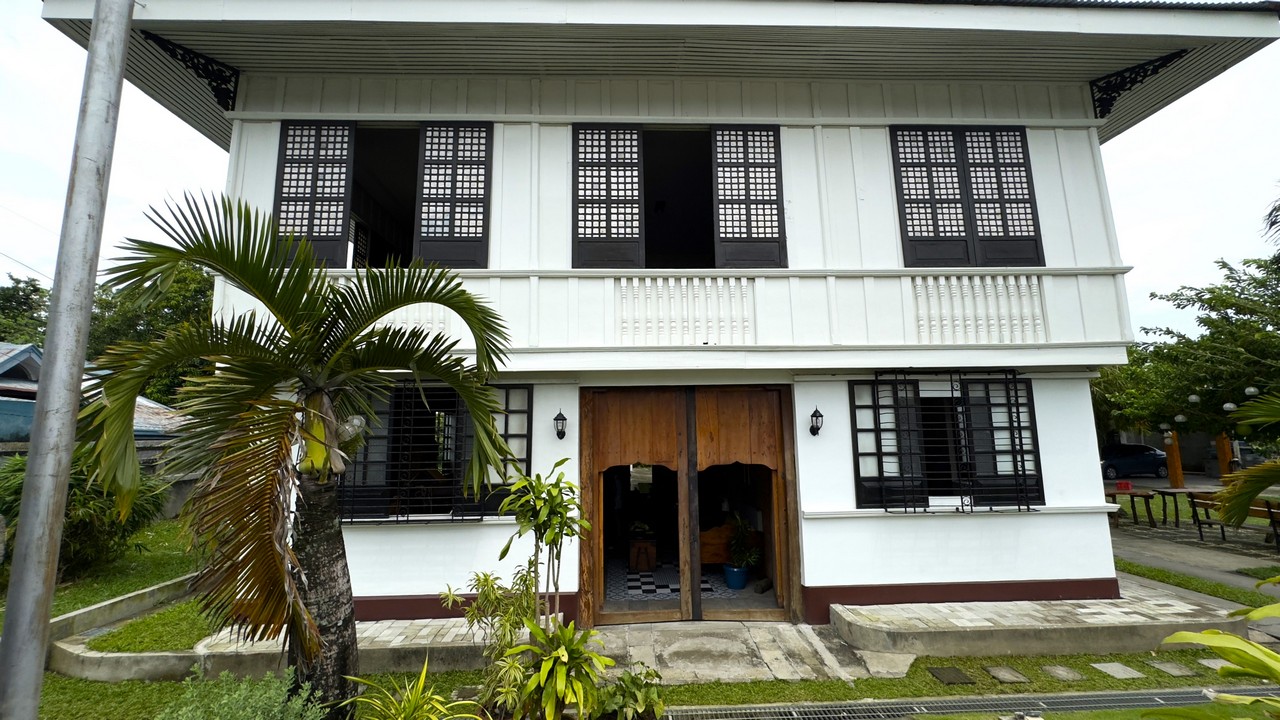 Mama's Kitchen House. Jeeves de Veyra
Mama's Kitchen House. Jeeves de Veyra
 Mama's Kitchen House. Jeeves de Veyra
Mama's Kitchen House. Jeeves de Veyra A few steps away is Mama’s cookies, a bakeshop in a heritage house. This was a pasalubong stop of the crawl where the shop sampled their mango chewies, thick chewy cookies with mango and crispies, thinner cookies with that noticeable crunch. They also sell hablon, a handwoven cloth made with different materials from rayon to jusi. Some are made with a loom on the near corner of the shop.
A few steps away is Mama’s cookies, a bakeshop in a heritage house. This was a pasalubong stop of the crawl where the shop sampled their mango chewies, thick chewy cookies with mango and crispies, thinner cookies with that noticeable crunch. They also sell hablon, a handwoven cloth made with different materials from rayon to jusi. Some are made with a loom on the near corner of the shop.
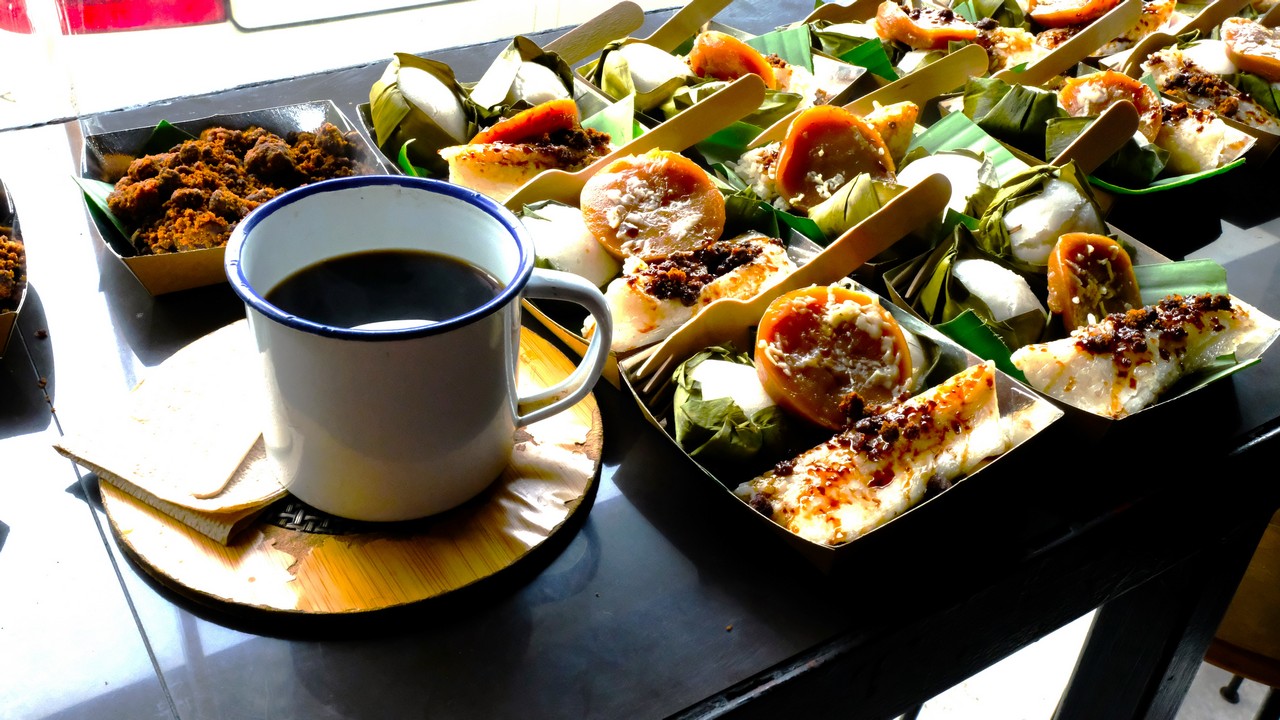 Coffee and kakanin at Glory Café. Jeeves de Veyra
Coffee and kakanin at Glory Café. Jeeves de Veyra
 Coffee and kakanin at Glory Café. Jeeves de Veyra
Coffee and kakanin at Glory Café. Jeeves de Veyra Glory Café was the third stop to try out Iloilo heritage coffee. Sala Sala coffee is the traditional way of preparing coffee similar to “sock coffee” in other Asian countries. For this one, iloilo robusta coffee is coarsely ground and poured into a sock five times to filter out the grounds.
Glory Café was the third stop to try out Iloilo heritage coffee. Sala Sala coffee is the traditional way of preparing coffee similar to “sock coffee” in other Asian countries. For this one, iloilo robusta coffee is coarsely ground and poured into a sock five times to filter out the grounds.
The recipe is roughly 125 grams of coffee to 3 liters of water. The result is an earthy coffee with strong familiar nutty chocolate notes served in old-school metal enamel cups. Have this with puto, kutsinta, and ibus, the ilonggo version of suman.
The recipe is roughly 125 grams of coffee to 3 liters of water. The result is an earthy coffee with strong familiar nutty chocolate notes served in old-school metal enamel cups. Have this with puto, kutsinta, and ibus, the ilonggo version of suman.
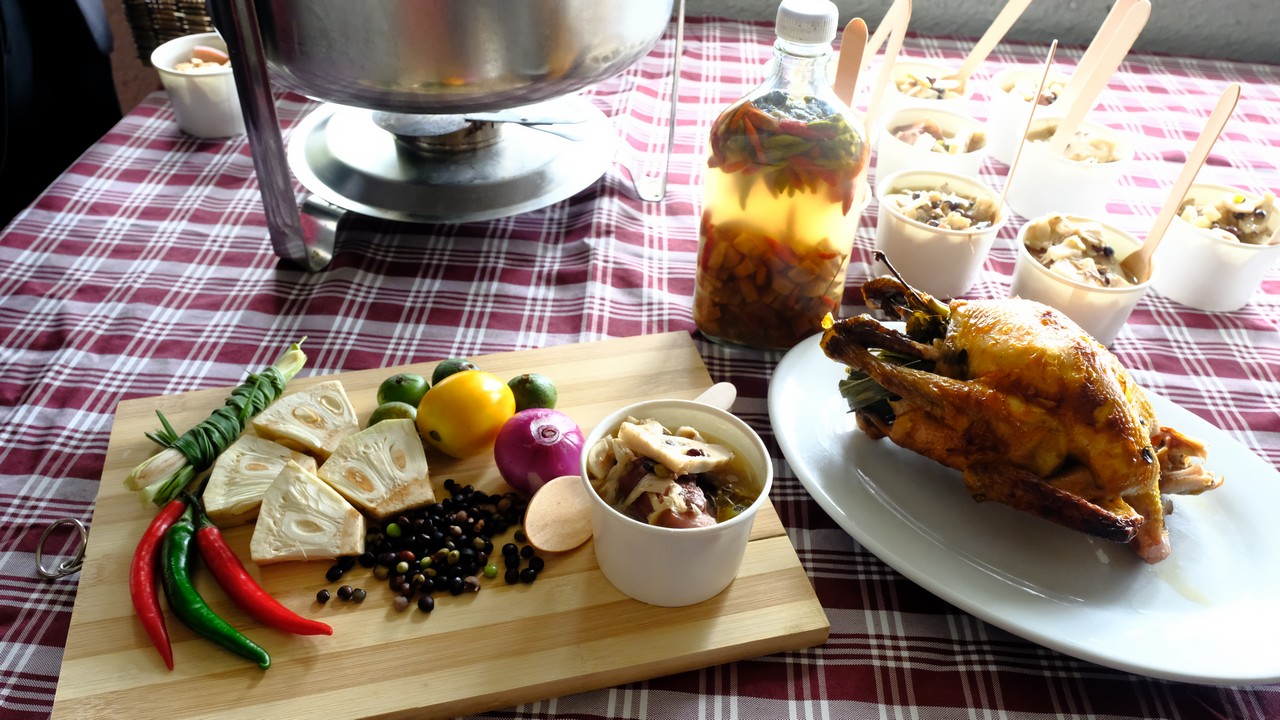 KBL and Native Chicken at Breakthrough. Jeeves de Veyra
KBL and Native Chicken at Breakthrough. Jeeves de Veyra
 KBL and Native Chicken at Breakthrough. Jeeves de Veyra
KBL and Native Chicken at Breakthrough. Jeeves de Veyra Beachside restaurant Breakthrough is one of Iloilo's success stories. Founded by a restaurateur and a marine biologist, this financial breakthrough of the Robles family has expanded into two more concepts across the city.
Beachside restaurant Breakthrough is one of Iloilo's success stories. Founded by a restaurateur and a marine biologist, this financial breakthrough of the Robles family has expanded into two more concepts across the city.
ADVERTISEMENT
The branch in Villa is the one to go to for first-timers as it features the beachside breeze, aquariums with live seafood, a lobster pool, and a view of Guimaras across the Iloilo strait.
The branch in Villa is the one to go to for first-timers as it features the beachside breeze, aquariums with live seafood, a lobster pool, and a view of Guimaras across the Iloilo strait.
For this stop, Breakthrough gave us a sample of KBL – Kadyos, Baboy at Langka which featured two of Iloilo’s local ingredients, souring agent Batwan and kadyos beans. The soup is a milder fruitier version of sinigang as Batwan is not as strong as Luzon souring ingredients. This was served alongside roast native chicken. The meat is leaner than usual and nice with a spicy splash of sinamak.
For this stop, Breakthrough gave us a sample of KBL – Kadyos, Baboy at Langka which featured two of Iloilo’s local ingredients, souring agent Batwan and kadyos beans. The soup is a milder fruitier version of sinigang as Batwan is not as strong as Luzon souring ingredients. This was served alongside roast native chicken. The meat is leaner than usual and nice with a spicy splash of sinamak.
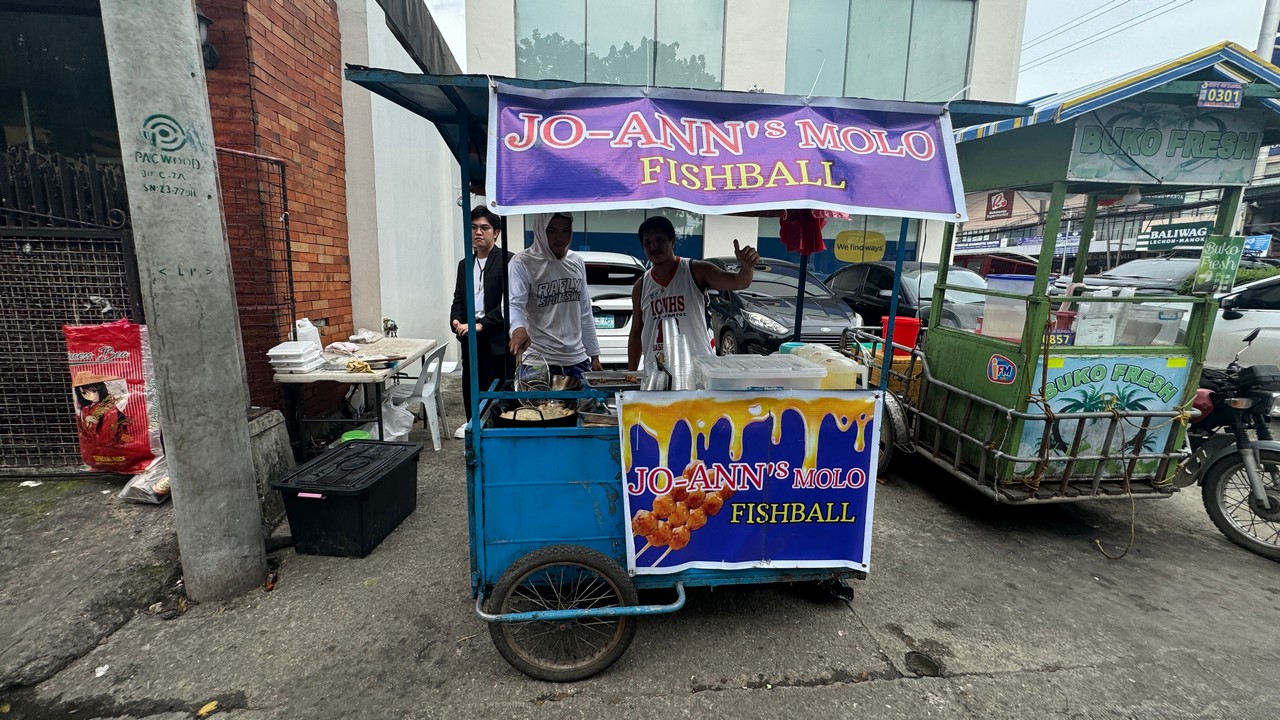 Joanne’s fishball stall in Molo. Jeeves de Veyra
Joanne’s fishball stall in Molo. Jeeves de Veyra
 Joanne’s fishball stall in Molo. Jeeves de Veyra
Joanne’s fishball stall in Molo. Jeeves de Veyra Molo is not only known for pancit Molo but for fishballs. Our hosts graciously gave us a taste of the Street Food Tour with a stop at Iloilo’s legendary Joanne’s Molo Fishball stall off to one side of Molo Plaza. There are many branches of carts of these all over the city, but the first one right beside the Molo Plaza and church is worthy of a foodie pilgirmage.
Molo is not only known for pancit Molo but for fishballs. Our hosts graciously gave us a taste of the Street Food Tour with a stop at Iloilo’s legendary Joanne’s Molo Fishball stall off to one side of Molo Plaza. There are many branches of carts of these all over the city, but the first one right beside the Molo Plaza and church is worthy of a foodie pilgirmage.
This was no ordinary squished mushy fishball. These retain their round shape with a crunchy shell. Think fish nuggets made with Carajo fish rather than fish balls. A snack made better with their sauces that range from 1 (sweet) to 4 (spicy).
This was no ordinary squished mushy fishball. These retain their round shape with a crunchy shell. Think fish nuggets made with Carajo fish rather than fish balls. A snack made better with their sauces that range from 1 (sweet) to 4 (spicy).
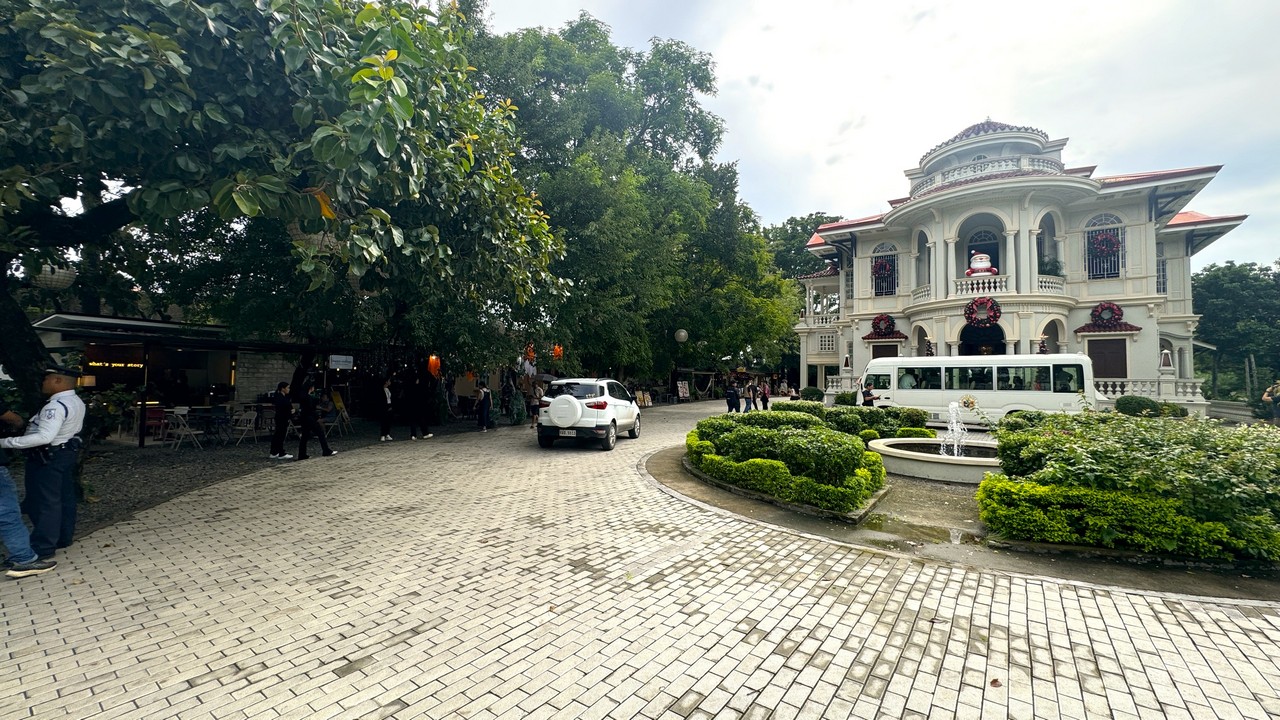 Molo Mansion and food park. Jeeves de Veyra
Molo Mansion and food park. Jeeves de Veyra
 Molo Mansion and food park. Jeeves de Veyra
Molo Mansion and food park. Jeeves de Veyra A short walk across to the plaza is Molo Mansion. This has been modernized with an expansive parking lot at the back and with a souvenir shop on the first floor.
A short walk across to the plaza is Molo Mansion. This has been modernized with an expansive parking lot at the back and with a souvenir shop on the first floor.
ADVERTISEMENT
On one side is a food park with our next destination. In the food park is Happy Endings where ice cream maker Ice cream maker Tajen Sul churns Ilonggo flavors into cool desserts. On the menu are his Baye Baye ice cream which captured the coconut-y essence of Ilonggo espasol, and the fruity brightness of batwan with the sweet crunch of graham crackers in his Batwan Cheesecake.
On one side is a food park with our next destination. In the food park is Happy Endings where ice cream maker Ice cream maker Tajen Sul churns Ilonggo flavors into cool desserts. On the menu are his Baye Baye ice cream which captured the coconut-y essence of Ilonggo espasol, and the fruity brightness of batwan with the sweet crunch of graham crackers in his Batwan Cheesecake.
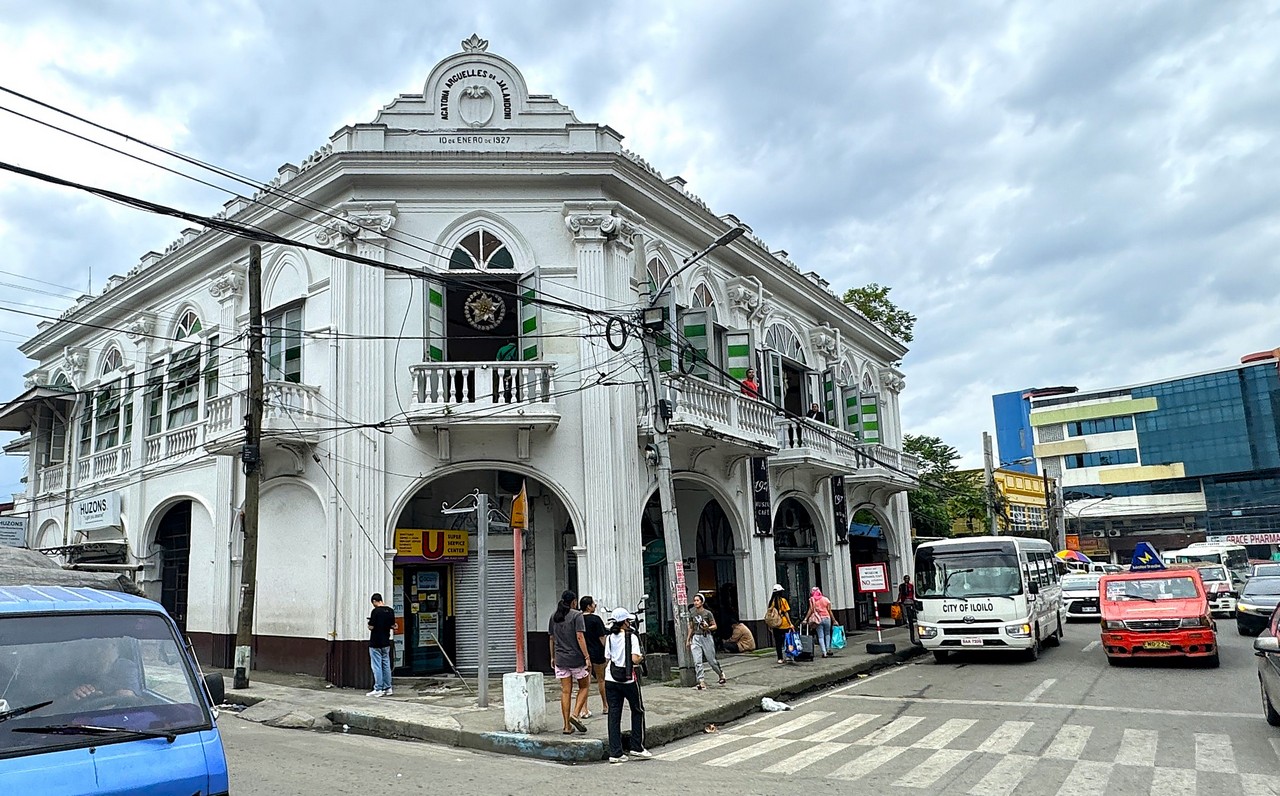 Agatona Museum. Jeeves de Veyra
Agatona Museum. Jeeves de Veyra
 Agatona Museum. Jeeves de Veyra
Agatona Museum. Jeeves de Veyra The last stop was the Agatona 1921 Museum. This is the Jalandoni-Montinola ancestral home that’s like peering into a time machine to get a glimpse how the upper crust lived back in the mid 20th century.
The last stop was the Agatona 1921 Museum. This is the Jalandoni-Montinola ancestral home that’s like peering into a time machine to get a glimpse how the upper crust lived back in the mid 20th century.
Take some time to go around the house check out memorabilia like old time cameras, golf clubs, and even a fully set dining table with china and candelabra. This should be at the tail end of the crawl and gazing at the Jaro Plaza and Church as the sun sets while having merienda is a treat.
Take some time to go around the house check out memorabilia like old time cameras, golf clubs, and even a fully set dining table with china and candelabra. This should be at the tail end of the crawl and gazing at the Jaro Plaza and Church as the sun sets while having merienda is a treat.
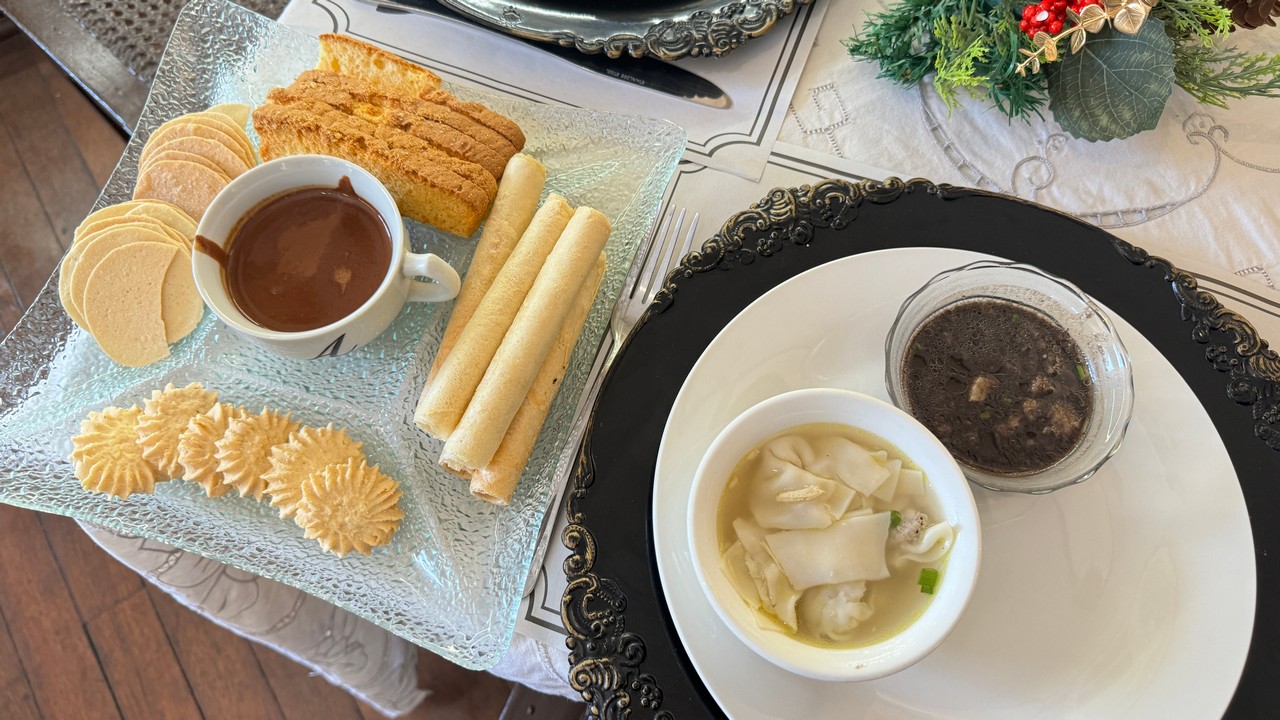 Merienda at Agatona. Jeeves de Veyra
Merienda at Agatona. Jeeves de Veyra
 Merienda at Agatona. Jeeves de Veyra
Merienda at Agatona. Jeeves de Veyra As Jaro is home to bakeshops and pasalubong shops, it was fitting for the last spread to have barquillos, mamon, galletas, and local cookies with a thick tsokolate-eh dip to end the trip. As it was getting late, our hosts also served local dinuguan and pancit Molo.
As Jaro is home to bakeshops and pasalubong shops, it was fitting for the last spread to have barquillos, mamon, galletas, and local cookies with a thick tsokolate-eh dip to end the trip. As it was getting late, our hosts also served local dinuguan and pancit Molo.
Besides these two tours, there are several more maps in the making including a Pasalubong tour, a Coffee crawl tour, and a Sustainable tour featuring advocacy projects.
Besides these two tours, there are several more maps in the making including a Pasalubong tour, a Coffee crawl tour, and a Sustainable tour featuring advocacy projects.
ADVERTISEMENT
These are intended to be supplementary activities for guests in Iloilo coming for meetings and conventions.
These are intended to be supplementary activities for guests in Iloilo coming for meetings and conventions.
The local government’s e-buses and local guides can accompany visitors during breaks between activities and after-hours.
The local government’s e-buses and local guides can accompany visitors during breaks between activities and after-hours.
While the food crawl maps were a product of the Creative Gastronomy Mapping Strategy Development Showcase by the Iloilo MICE Center as funded and supported by DTI's Lunsod Lunsad award, this will benefit the tourism sector as the maps will be publicly available for DIY food crawls. These will be available for download via QR Codes displayed at strategic spots around Iloilo City.
While the food crawl maps were a product of the Creative Gastronomy Mapping Strategy Development Showcase by the Iloilo MICE Center as funded and supported by DTI's Lunsod Lunsad award, this will benefit the tourism sector as the maps will be publicly available for DIY food crawls. These will be available for download via QR Codes displayed at strategic spots around Iloilo City.
ADVERTISEMENT
ADVERTISEMENT


